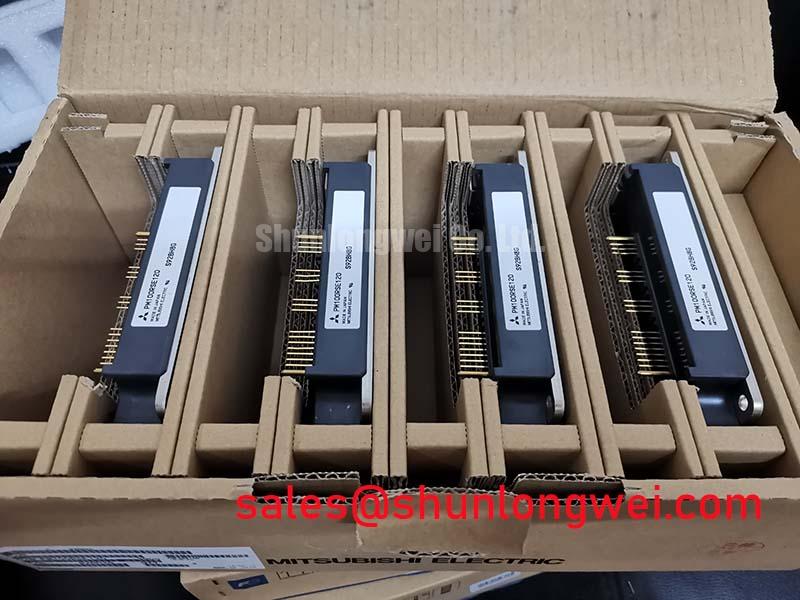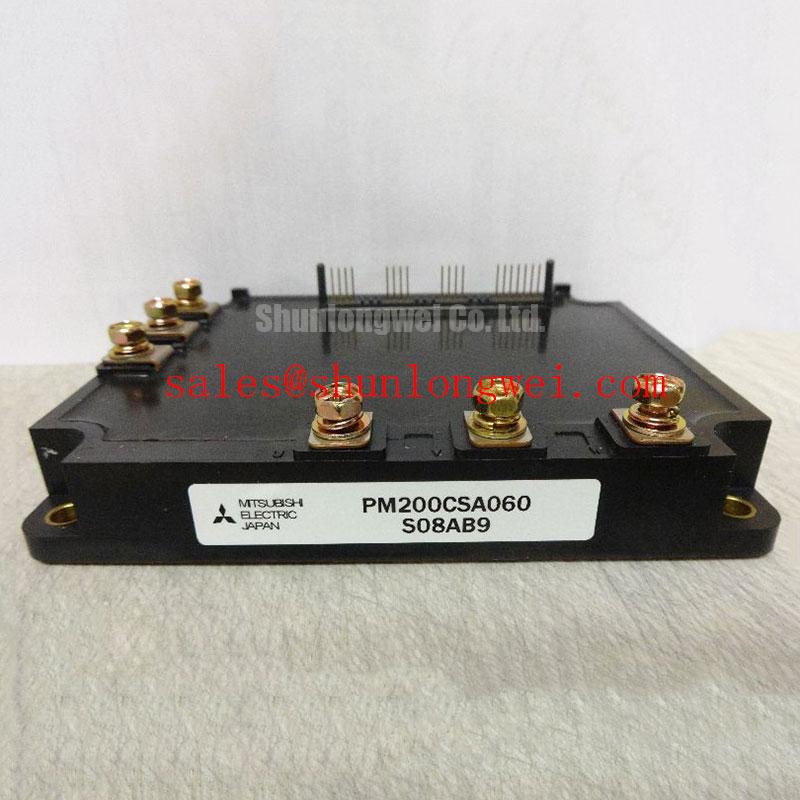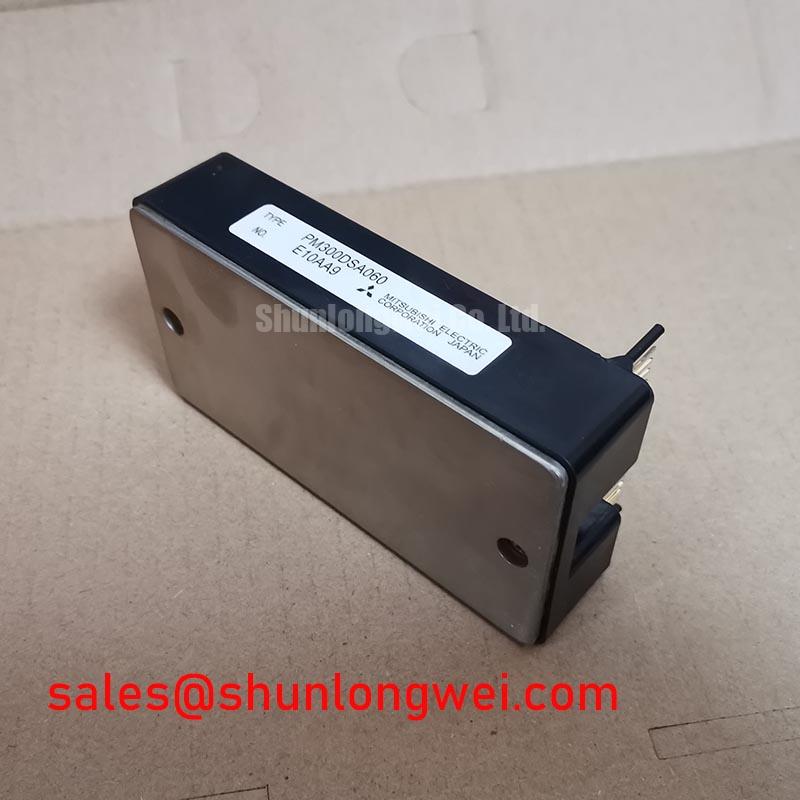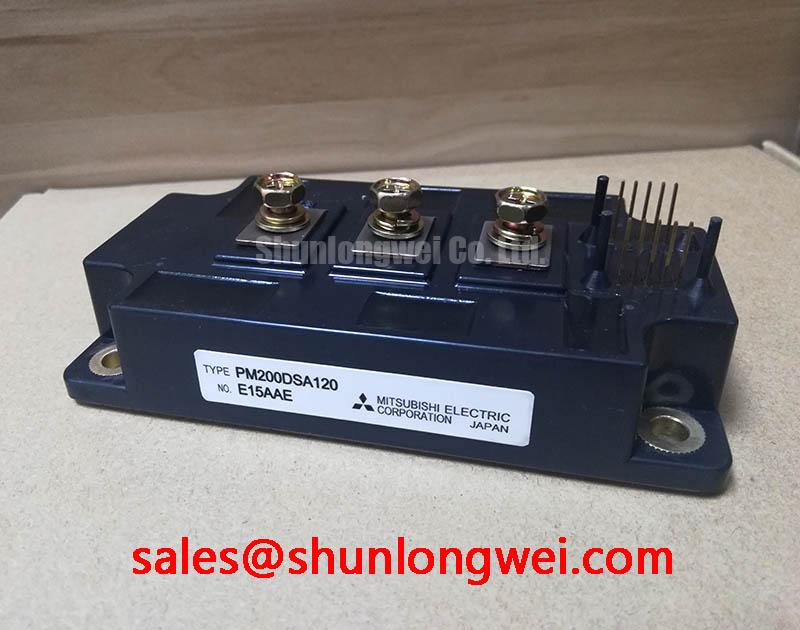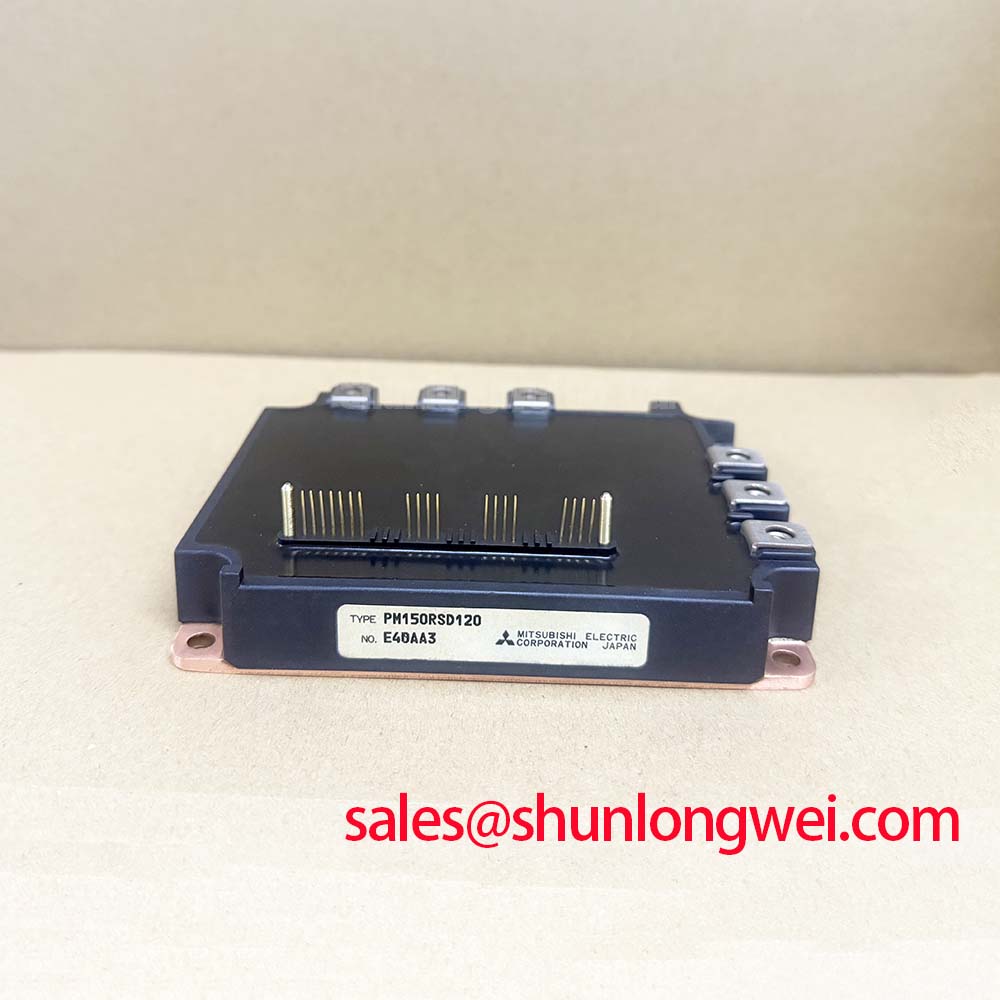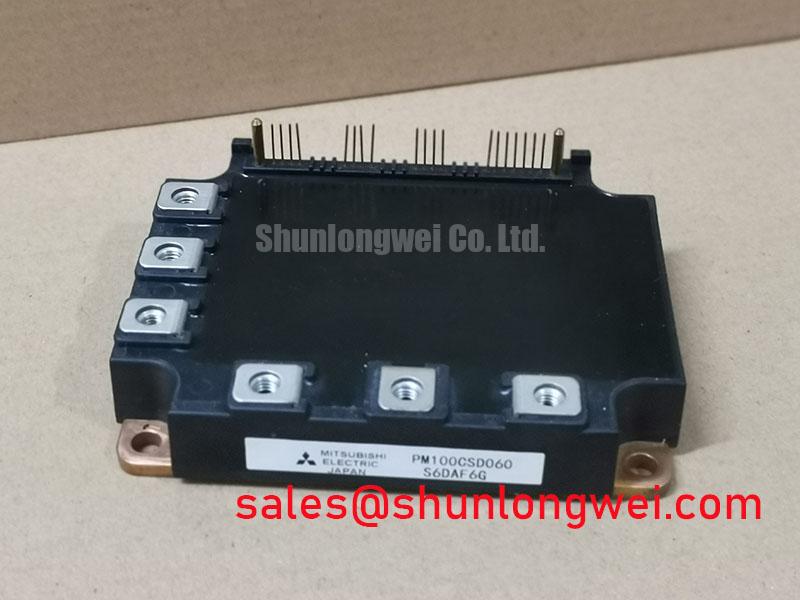Content last revised on November 15, 2025
PM100RSE120 IGBT: Efficiency in High-Frequency Designs
Technical Overview of the Mitsubishi PM100RSE120
The Mitsubishi PM100RSE120 is engineered for high-frequency power conversion, delivering superior efficiency by minimizing both conduction and switching losses. This 6-pack IGBT module provides a robust foundation for compact and energy-conscious system designs. Key specifications include: 1200V | 100A | VCE(sat) 2.7V max. It offers the dual benefits of reduced thermal load and enhanced power density. For engineers questioning its suitability in modern drives, the module's architecture is optimized for switching frequencies up to 20 kHz, directly addressing the demands of advanced Variable Frequency Drives (VFDs) and solar applications where performance cannot be compromised.
Technical Inquiries for the PM100RSE120
Common questions regarding the implementation and performance of the PM100RSE120 are addressed below to support design and integration efforts.
- What is the primary advantage of the 2.7V maximum VCE(sat) rating?
A low collector-emitter saturation voltage, or VCE(sat), is instrumental in minimizing conduction losses. This means less power is dissipated as heat while the IGBT is in its 'on' state, leading directly to higher overall system efficiency and a reduced requirement for extensive thermal management hardware. - How does this module's performance adapt to varying switching frequencies?
The PM100RSE120 is specifically characterized for low switching losses (Eon and Eoff). While all IGBTs exhibit a trade-off between conduction and switching losses, this module is optimized to maintain high efficiency in applications operating in the 5 kHz to 20 kHz range, a common spectrum for modern motor drives and power supplies. - What are the key thermal considerations when integrating this module?
The junction-to-case thermal resistance (Rth(j-c)) is a critical parameter. For the PM100RSE120, this value dictates the efficiency of heat transfer from the silicon die to the heatsink. Effective thermal design, including proper mounting and the use of appropriate thermal interface material, is essential to operate the device within its safe temperature limits and ensure long-term reliability.
Deployment Snapshot: Enhancing VFD Power Density
A notable application of the PM100RSE120 is in the development of next-generation Variable Frequency Drives (VFDs) for industrial automation. Engineers tasked with reducing the physical footprint of a 45kW motor drive leveraged this module's capabilities. The ability to operate efficiently at higher switching frequencies allowed for the use of significantly smaller inductors and other magnetic components. This, combined with the low thermal output stemming from its minimal VCE(sat), enabled a more compact heatsink design. The result was a 20% reduction in the inverter's total volume without sacrificing performance or reliability, a critical competitive advantage in space-constrained industrial environments. For drives where high power density is a primary design criterion, the PM100RSE120 provides a clear pathway to achieving system-level size and cost reductions.
Application Focus: Where Efficiency and Speed Converge
The specific electrical characteristics of the PM100RSE120 make it a prime component for systems where the balance between speed and efficiency is paramount. Its architecture is particularly advantageous in the following areas:
- Variable Frequency Drives (VFDs): In motor control, higher switching frequencies enable smoother torque control and reduced audible noise. The module's low switching losses ensure that these benefits do not come at the cost of excessive heat generation.
- Solar Power Inverters: Maximizing the energy harvested from photovoltaic arrays requires inverters with exceptional efficiency. The module's low conduction and switching losses contribute to a higher conversion rate, translating directly into greater energy output.
- Uninterruptible Power Supplies (UPS): Reliability and efficiency are the cornerstones of UPS design. The PM100RSE120 provides the robust power switching necessary to ensure seamless power delivery while minimizing standby energy consumption.
- Welding Power Supplies: The fast and precise control of high currents is essential in advanced welding equipment. This module offers the rapid switching performance required for sophisticated welding waveforms.
For VFDs operating up to 20kHz, its 2.7V VCE(sat) makes the PM100RSE120 a superior choice for balancing losses over lower-frequency optimized modules.
Anatomy of Low-Loss Performance
The performance of the PM100RSE120 is rooted in its internal silicon design, which is carefully architected to manage the fundamental trade-offs in power electronics. How does the PM100RSE120 reduce system size? Its high-frequency capability allows for smaller magnetic components. This module integrates six IGBTs with corresponding free-wheeling diodes (FWDs) in a three-phase bridge configuration. The defining characteristic is the optimization of the IGBT chip to reduce both turn-on (Eon) and turn-off (Eoff) energies. This is achieved through techniques that balance carrier lifetime control and device geometry, a critical aspect detailed in resources like the deep dive into IGBT structure. This focus on dynamic performance allows designers to push operating frequencies higher, which in turn shrinks the size and cost of associated passive components like inductors and capacitors, facilitating a higher power density for the entire system.
Comparative Data for Informed Design Choices
To assist in the component evaluation process, this section provides a factual comparison based on datasheet values. This information is intended to support an engineer's technical assessment. Please note that performance can vary based on specific application conditions, such as gate drive design and thermal management.
For systems that may require a higher current rating while maintaining a similar voltage class, the PM150RSE120 offers a 150A capability within the same R-Series family from Mitsubishi.
| Parameter | PM100RSE120 | Generic Competing Module (Typical Values) | Engineering Implication |
|---|---|---|---|
| Collector Current (IC) | 100A | 100A | Both modules are rated for similar continuous current handling. |
| Collector-Emitter Voltage (VCES) | 1200V | 1200V | Provides equivalent voltage blocking capability for 400-480V AC line applications. |
| VCE(sat) max @ 100A, 125°C | 2.7V | ~2.9V - 3.2V | The lower VCE(sat) of the PM100RSE120 indicates lower conduction losses and higher efficiency. |
| Max Junction Temp (Tj max) | 150°C | 150°C / 175°C | Operating temperature limits are a critical factor; some alternatives may offer a higher thermal ceiling. |
Strategic Impact on Energy-Efficient System Design
The push for greater energy efficiency, driven by regulations and market demand, places significant pressure on power system designers. Components like the PM100RSE120 are central to this strategic shift. By providing a pathway to reduce power losses at the component level, this IGBT module enables designers to meet and exceed standards such as the EU's Ecodesign Directive for electric motors. The ability to create more efficient and compact inverters has a cascading effect, reducing the total cost of ownership (TCO) for the end-user through lower energy consumption and potentially smaller system enclosures. This aligns with the broader industry trend towards electrification and sustainability, where every percentage point of efficiency gain is a valuable contribution. Understanding the principles of power semiconductor selection is crucial for leveraging these advantages effectively.
Core Electrical and Thermal Specifications
The following parameters are fundamental to the design and application of the PM100RSE120. This curated list highlights the specifications most critical to achieving efficient and reliable power conversion.
| Parameter | Value |
|---|---|
| Max Collector-Emitter Voltage (VCES) | 1200V |
| Max Continuous Collector Current (IC) @ Tc=80°C | 100A |
| Max Collector-Emitter Saturation Voltage (VCE(sat)) @ 100A | 2.7V |
| Max Power Dissipation (Pc) | 520W |
| Operating Junction Temperature (Tj) | -40 to +150°C |
| Isolation Voltage (Viso) | 2500V (AC for 1 minute) |
For a complete list of specifications, electrical characteristics, and performance graphs, please refer to the official datasheet. Download the Datasheet: PM100RSE120.pdf
The Collector-Emitter Saturation Voltage (VCE(sat)) is a pivotal metric for efficiency. What is the main benefit of its low VCE(sat)? It directly lowers conduction losses, improving overall efficiency. To visualize this, think of VCE(sat) as the resistance of a valve when it's fully open. A lower VCE(sat), like the 2.7V of this module, is analogous to a wider, less restrictive valve, allowing electrical current to flow through with minimal energy being wasted as heat. This ensures more of the input power is delivered to the load, enhancing system performance and simplifying thermal design. For further reading on this topic, a useful resource on VCE(sat) calculation is available.
Future-Facing Design Considerations
Integrating the PM100RSE120 positions a design not just for current requirements but for future trends in power electronics. As industries from automation to renewable energy continue to demand higher power density and stricter efficiency, the foundational characteristics of this module—low losses and high-frequency operation—become increasingly strategic. The ongoing development of advanced control algorithms and wide-bandgap materials will further unlock the potential of silicon-based IGBTs. By architecting systems around efficient and reliable components today, engineers create platforms that are more adaptable to tomorrow's technological advancements, ensuring longer product life cycles and a competitive edge in an evolving market.

